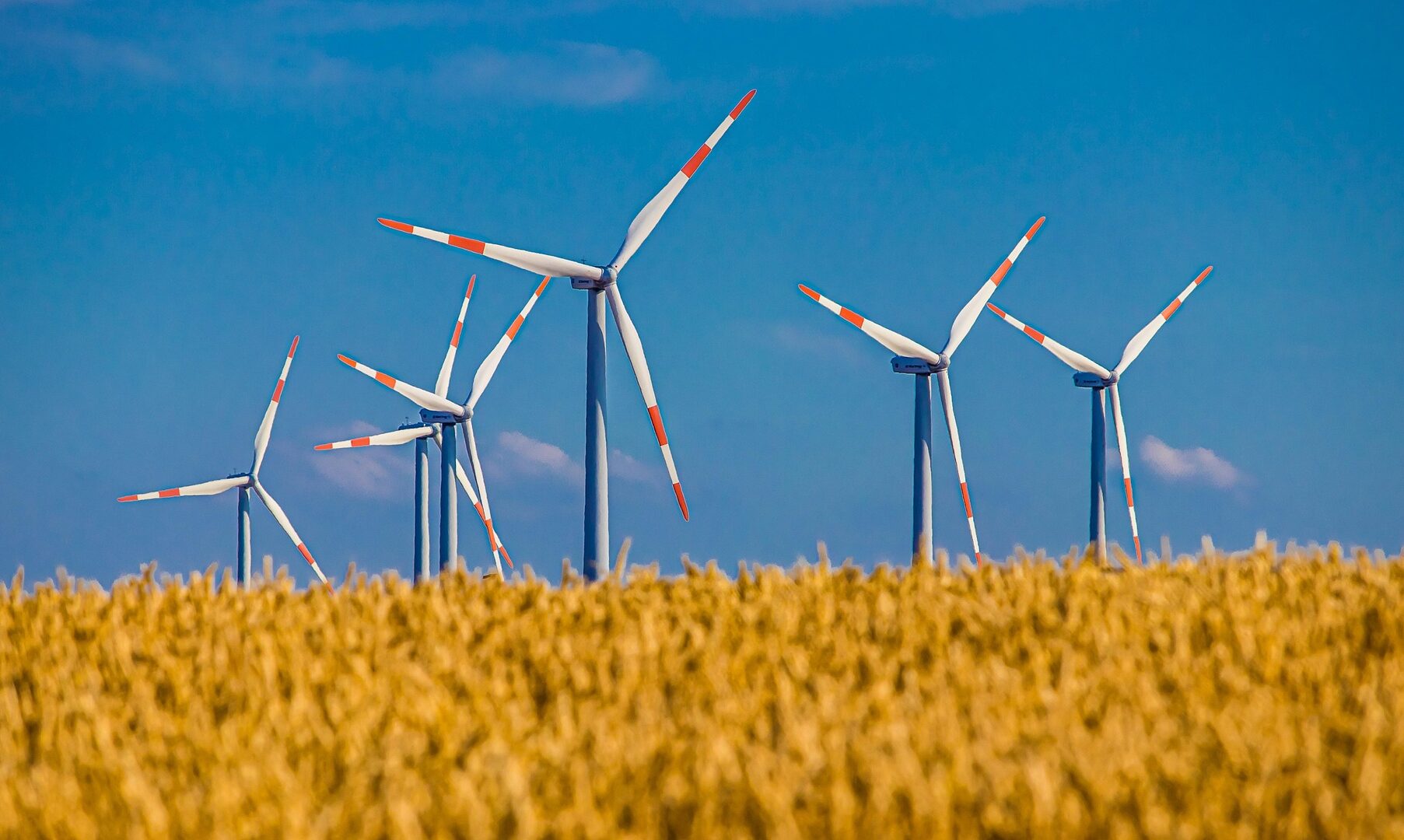The Dysprosium Supply Chain: A Forgotten Child in the European Wind Industry?

This article is part of a series of articles authored by young, aspiring China scholars under the Future CHOICE initiative.
The European Green Deal, as part of its robust response to the triple planetary crisis – namely, climate change, pollution, and biodiversity loss – focuses on both decarbonization and energy security. A vital component of this policy is the expansion of offshore wind energy, which is crucial for achieving the Union’s renewable energy target of at least 42.5 percent by 2030. Meeting this goal will require a significant increase in wind capacity – from 204 GW in 2022 to over 500 GW by 2030.
However, this ambitious expansion faces a serious challenge due to the EU’s heavy reliance on rare earth elements (REEs). China, which dominates global supply of these minerals, has a history of leveraging its position to influence international markets. Indeed, in February 2025, China expanded export controls on critical raw materials, announcing that it would require export licenses for 20 REE-related products, citing national security concerns.
These measures build on earlier actions, including the October 2023 decision to require export permits for certain graphite products – crucial for electric vehicle (EV) batteries – and the December 2023 ban on exporting technology used in manufacturing rare earth magnets. These moves highlight Beijing’s history of using REE export restrictions as tools for economic retaliation. For instance, during a 2010 territorial dispute with Japan, China temporarily reduced REE export quotas by 37 percent, triggering a global price surge and exposing the vulnerabilities of countries dependent on these materials. Such developments underscore China’s strategic use of export controls on critical raw materials, with profound implications for global industries reliant on REEs, including clean energy and defense.
Geoeconomics: China’s Strategic Leverage
Among REEs, dysprosium (Dy) plays a critical role in the development of rare-earth-based permanent magnets, particularly neodymium-iron-boron (NdFeB) magnets, which are essential for clean energy technologies. Dy enhances magnetic properties at high temperatures, which makes it indispensable for the efficiency and durability of wind turbines and EVs. As demand for these technologies rises, China’s need for Dy could increase five- to tenfold by 2050, driven largely by growth in EVs and wind energy installations.
Currently, global extractable Dy reserves are concentrated in China. However, rising demand could deplete these reserves by 2045. China’s domestic Dy supply – regulated by a production quota policy – will meet only a fraction of its future needs, necessitating substantial imports. While recycling and material substitution may ease supply constraints, a Dy shortage is likely in the short to medium term.
Dy sourcing is also geopolitically complex. China and Myanmar are the chief suppliers. China, pursuing an “ecological civilization” and “dual circulation” strategies, could prioritize Dy for domestic use. Meanwhile, Myanmar’s volatile political landscape and the seizure of mineral-rich regions like Chipwi and Pangwaun by military-linked groups threaten supply stability. As the world’s third-largest source of mined REEs, including Dy, Myanmar plays a key role in the supply chain. Yet environmental degradation caused by toxic mining practices continues to cause major damages to local ecosystems and communities. China’s dependence on Myanmar for REEs both deepens these issues and heightens global supply chain vulnerabilities.
Efforts to diversify supply – such as new mining projects – are underway, but remain in early stages. Consequently, countries like Myanmar are likely to continue bearing the brunt of illicit mining, labor violations, and environmental harm in the near term. These patterns highlight the geo-economic risks posed by China’s dominance over critical raw materials and related technologies.
Mitigating Dysprosium Supply Chain Risks
These dynamics underscore the urgent need for a comprehensive risk management framework to support the green transition and strengthen strategic autonomy. Europe must adopt a mix of policy, innovation, and investment to reduce its vulnerabilities. The following three approaches offer potential pathways to enhance supply chain resilience while fostering sustainable technological development.
1. Biomimicry: Nature as Mentor
Biomimicry, which involves drawing inspiration from natural systems to develop new materials, technologies, and industrial processes, is one viable approach. Beyond its engineering applications, its nine core principles can inform a “biomimetic” industrial strategy focused on resource conservation, waste reduction, and local sourcing. This approach calls for intensified R&D in wind energy technology – particularly turbine and magnet design – and stronger recycling initiatives.
The recently passed Critical Raw Materials Act includes provisions mandating that manufacturers disclose the composition of permanent magnets in their products, thereby supporting recycling efforts. Additional rules will soon be adopted to set minimum recycled content levels in new magnets. While zero-waste metallurgy remains a significant challenge, advancements in REE recovery – including biosorption techniques using bacteria or fungi – offer hope.
Biomimetic designs inspired by humpback whale fins and lotus flowers have already improved aerodynamic performance and wind turbine blade efficiency. Incorporating such designs can not only enhance performance but also reduce material usage in permanent magnets. Alternatives like ferrite-based magnets or high-temperature superconductors in direct-drive turbines represent strategic responses to REE scarcity. Policies supporting cross-disciplinary research efforts engaging biologists, engineers, and material scientists are, thus, essential for reducing supply chain vulnerabilities.
2. Circular Taxation: Incentivizing Efficiency
Reducing Dy usage and boosting recycling through economic incentives can strengthen supply chain resilience. A unified “circular taxation” framework – discussed in academic circles – proposes measures such as taxing the extraction of raw materials to encourage the use of recycled alternatives, and offering tax credits or VAT reductions to companies adopting sustainable practices. Such policies could catalyze a shift away from raw Dy use, especially in wind turbine magnet production.
Investing in more efficient REE recovery technologies and fostering industry-policy collaborations are key. Despite progress, the industry faces challenges such as small scale, limited raw material sources, and low-end product outputs. Therefore, China has passed a law implementing a 30 percent VAT refund for processing waste with at least 95 percent REE content. Meanwhile, the now-expired Rare Earth Magnet Manufacturing Production Tax Credit Act (H.R. 2849) in the US sought to grant substantial tax credits of $20-30 per kilogram for domestic and recycled production – an idea the EU could adopt.
3. Boosting EU Funding for Bio-Inspired Design and Recovery
The Horizon Europe framework (Clusters 4 and 5) already funds research on permanent magnets, but future calls should explicitly require applicants to integrate Dy recycling and material recovery strategies, outlining how their innovations contribute to these goals. The next rounds of calls should also emphasize nature-inspired material efficiency, aligning with the EU’s interest in bio-intelligent manufacturing and biomimetic material development.
The European Innovation Council should further expand its Accelerator and Pathfinder programs to include dedicated funding for projects focusing on magnet design innovations and advanced recycling technologies. At the recent EIT Raw Materials Summit, industry stakeholders stressed the need for larger grants to scale promising technologies. One option could involve allocating additional points to proposals integrating Dy recovery or biomimicry – much like how 2024 EIC calls favored sustainability in agriculture and food packaging.
The Innovation Fund could similarly create a dedicated financing stream for permanent magnet recycling and REE recovery. Proposals incorporating circular economy principles – such as magnet reuse or magnetic component repurposing – should receive preferential evaluation, as they would significantly enhance the commercial viability of Dy recovery. A potential model for this could be the Hydrogen auction scheme, which offers fixed premiums for hydrogen production. This could be adapted to reward recycled REE use in magnets, similarly to the goals outlined in the H.R. 2849.
Strengthening Europe’s Wind Industry
Ensuring the resilience of the wind energy sector requires addressing often-overlooked yet essential materials like dysprosium. By integrating biomimetic innovations, circular taxation policies, and targeted EU funding, Europe can build a more sustainable and geopolitically independent wind industry. These initiatives align with broader EU industrial strategies, particularly the Clean Industrial Deal. Alongside related legislative measures – such as the Circular Economy Act, the European Innovation Act, and the Advanced Materials Act – enhancing Dy supply resilience could directly support the EU’s Competitiveness Compass, the latest roadmap for ensuring Europe’s industrial and technological leadership in the global green transition.
Written by
Alex Tóth
Alex Tóth was a Blue Book trainee at the European Commission (CINEA) in 2024. He holds an MSc in International Political Economy from NTU Singapore. His research focuses on how biomimetic principles, as manifested in circular and bioeconomies, can enhance energy, material, and food resilience in the age of geoeconomics.


